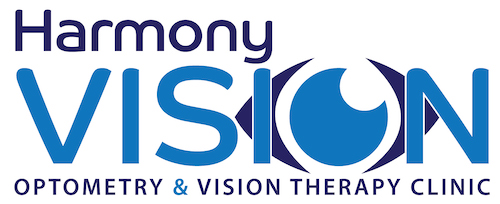Vision Therapy
 What is Vision Therapy?
What is Vision Therapy?
Vision Therapy or Vision Training is not about trying to increase eye muscle strength, but more about increasing eye muscle control and learning where to point the eyes with ease and coordination. Vision therapy may be used in the treatment of disorders with the dynamic aspects of vision: eye aiming (tracking or following with the eyes); eye teaming (convergence or the ability to point both eyes accurately at the same time); focusing (ability to change focus from far to close), which are all important aspects of visual processing.
Vision Training at Harmony Vision Gold Coast
Research into the condition known as convergence insufficiency has demonstrated that the success rate of Office Based Vision Therapy for this condition is greater than “simpler” form of vision training (pencil push-ups) or computer based programs that are used alone.
Our vision therapists guide and assist you through your program. All of our Vision Training programs are custom-made and individually prescribed for each and every person.
Vision Therapy Outcomes
Essentially, the main goal of vision therapy is the reduction of symptoms associated with a vision problem. The following is a sample of the symptoms associated with reading and near work found in sufferers with convergence insufficiency, and can be also reported for other eye teaming and focussing difficulties:
Eye related symptoms while reading or doing close work:
- eyes that feel tired
- eyes that feel uncomfortable
- headaches
- double vision
- words move, jump, or appear to float
- eyes hurt or feel sore
- pulling feeling around eyes
- words blur or come in and out of focus
Performance related symptoms while reading or doing close work:
- feeling sleepy
- losing concentration
- difficulties remembering what you have read
- feeling like you read slowly
- losing place
- having to re-read the same lines
Individual results depend on many different variables. Patient age, the type of visual problem, and commitment to a vision therapy program will all influence the outcome. This is all discussed if vision therapy is considered to be a potential treatment option if a vision problem is found.
Adult and Vision Training
Vision training is not restricted to a particular age group, but age can change expected results or ability to participate in vision training.
In conditions like convergence insufficiency, many of the performance related symptoms could be blamed on something other than a vision problem. Consequently, we do sometimes see adults who didn’t realise that their difficulties during reading were caused by a vision problem that may have been present for years.
Children and Vision Training
Recent studies have estimated that 70% of what a child needs to process in the classroom is visual. A child’s frustrations with school-work could be related underlying vision problem. Vision problems can lead to a child who doesn’t enjoy reading, who finds it difficult to complete their work and ultimately can contribute to reduced self confidence. Not all vision problems can or need to be treated with vision training, but there are certain cases where vision training is an important part of the treatment process.
It is important to understand that vision therapy is not a replacement for reading tuition, remediation, or phonic awareness training. It does not “cure” dyslexia, ADHD/ADD or academic difficulties. But something that appears as “simple” as an eye-teaming problem can have a dramatic impact on some children and adults. Available concentration is “burnt up” by the need to concentrate on the mechanics of seeing. Obvious symptoms are headaches, eye-strain or complaints of blur, but some people tend suffer with less obvious symptoms like avoidance, concentration loss, reduced reading fluency. Vision problems may be a primary barrier to learning or they may be a further burden to a child with other difficulties (vision problems can co-exist in children with other difficulties such as ADD and reading difficulties).
Fatigue of the eye muscles that hold visual attention may explain why some children start out reading well in the early grades, only to start to encounter difficulties after grade 2 or 3.
The Role of Vision Therapy with Reading and Learning
Vision, reading and learning are complex processes. A child’s difficulties with reading or learning can be the result of multiple factors. The role of vision in learning, is to allow the person to maintain good attention and concentration easily, without experiencing blur, discomfort or double vision. Vision guides fine motor control when writing and helps us understand spatial concepts.
Because vision is a sense that we rely on heavily. The impact can range from mild to significant interference with attention, concentration and visual comfort. Detection and treatment of vision problems is important in anybody not achieving to potential. Something as simple as an eye teaming problem like convergence insufficiency can lead to disruptions to efficient learning and reading avoidance.
Research
Evidence based practice is the intersection of the patient’s needs, the practitioners clinical experience and guidance from available evidence. We have over 20 years experience in vision therapy, and clinic based (in-office) vision training is supported by over 40 years of clinical practice and scientific research, but like all areas of health care, the strength of the research will vary greatly across different parts of practice. Your optometrist takes this into consideration when discussing your individual needs or situation. Please contact us if you require more clarification.
